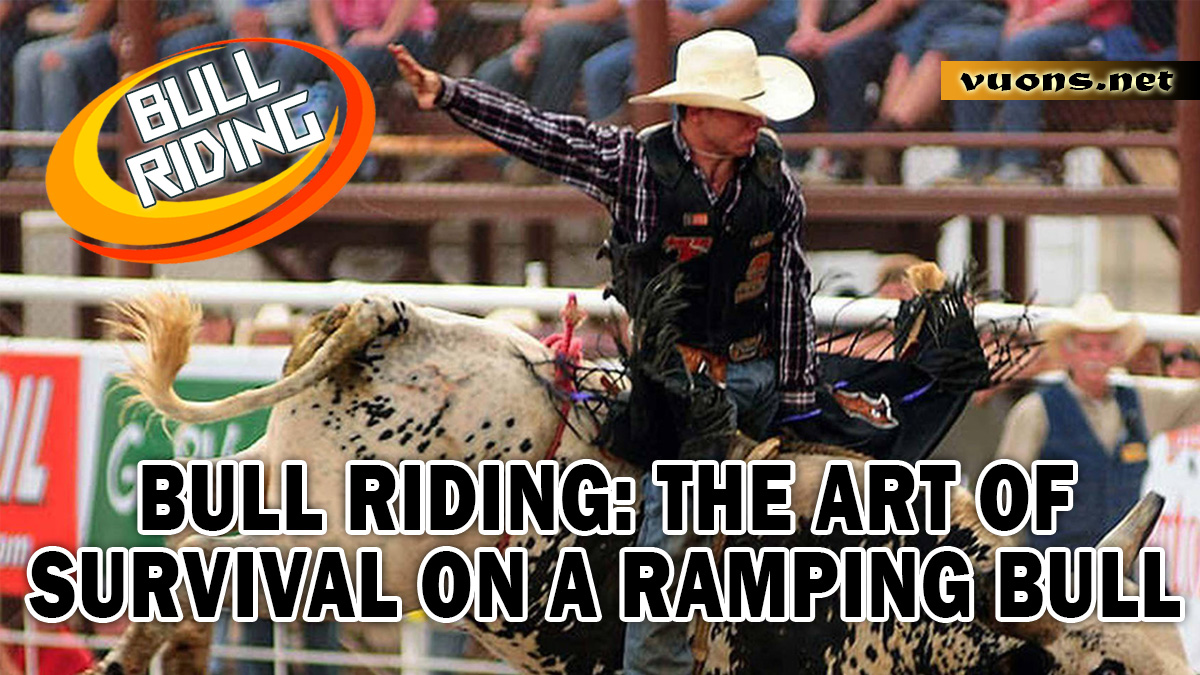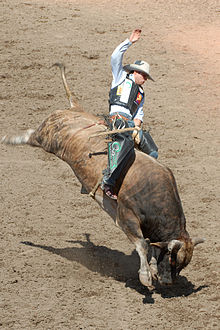Bull Riding: The World Most Challenging Rodeo Sport
History of Bull Riding: From Ranch Tradition to Competition
Bull Riding: The World Most Challenging Rodeo Sport – Bull riding, one of the most challenging rodeo Sports, has a long history. It originated in the ranching tradition of Mexico in the 16th century, when vaqueros (Mexican cowboys) tested their skills in controlling wild cattle. The tradition became known as “jaripeo,” an event that demonstrated courage and horsemanship.
In the 19th century, rodeo culture began to spread to the western United States through the migration of ranch workers. Informal competitions between local cowboys became part of ranch festivals. Bull riding became a major attraction due to the high level of risk and the thrill it offered to spectators.
The year 1936 marked a major step in the professionalization of the sport with the founding of the Rodeo Cowboys Association, which later evolved into the Professional Rodeo Cowboys Association (PRCA). This organization established standard rules, such as the eight-second time that competitors had to ride to be scored, and judging based on bull handling technique and aggressiveness.
In 1992, bull riders formed the Professional Bull Riders (PBR), an organization dedicated solely to growing the sport globally. Since then, bull riding has become more internationally recognized, with major tournaments such as the PBR World Finals attracting millions of viewers.
Over time, bull riding has not only reflected cowboy culture, but has also become a symbol of human courage and endurance. To this day, the sport continues to captivate fans around the world with its blend of tradition and modern competition.
Important Techniques for Surviving a Bull
Bull riding is one of the most extreme sports, where athletes must maintain their balance on a fast-moving and powerful wild bull. In order to survive the eight seconds that are the standard for competition, participants must master several very important techniques.
One of the basic techniques in bull riding is proper body position. Riders must keep their bodies upright and alert so as not to lose balance. Position your chest slightly forward with your legs bent and the soles of your feet under the bull’s body, ensuring that your body stays close to the bull’s back, not off to the side.
In addition, hand control is also very important. Often, riders use a rope to tie the bull with their dominant hand. The technique of gripping the rope tightly without being stiff, and keeping your hands above your head when the bull moves, is very important in maintaining position. Meanwhile, the non-dominant hand functions as a balancer, moving freely following the bull’s movements.
Another skill is the ability to read the bull’s movements. Experienced riders can predict the bull’s steps based on its movements, so they can adjust their bodies better. This ability is gained from intensive training and years of experience in dealing with various types of bulls.
In addition to technique, prime physical condition is also an important key. Endurance and core strength greatly help riders to last longer and overcome the unexpected shocks and movements of the bull.
Mandatory Equipment Used by Bull Riding Riders
Bull riding is an extreme sport that requires courage and high skills from its riders. To be able to stay on a bull for eight seconds, riders need some special equipment designed for safety and comfort. One of the main pieces of equipment is a bull rope. This rope is used to tie the bull to its body, giving the rider control while on it. This rope is usually made of strong materials such as nylon or sisal, and the binding must be precise so as not to injure the bull.
Other equipment is body protection, including chest protectors and spine protectors. This protection is very important to reduce the risk of serious injury from impacts or falls from the bull. In addition, body protectors also help riders feel safer while fighting a volatile bull.
Boots or horseshoes are also mandatory equipment for riders. These shoes are usually made of thick leather and equipped with strong soles to provide good grip when holding the feet on the bull. In addition, these shoes also protect the rider’s feet from injury when the bull moves quickly.
Riders also wear helmets or head protectors. While not required in all competitions, helmets can provide extra protection against head injuries in the event of a fall or a bull kick. Some riders also choose to wear hand guards or gloves to prevent friction or injury to the hand holding the rope.
Safe Tips for Beginners Who Want to Try Bull Riding
Bull riding is a challenging and high-risk sport, especially for beginners. Before trying this sport, it is important to pay attention to some tips so that you can do it safely.
First, basic training is very important. Beginners are advised to start by practicing on a tamer bull or dummy bull before trying on a live bull. This helps to get to know the bull’s movements and practice basic riding techniques.
Second, make sure the equipment used is correct and safe. The straps must be installed properly and the right riding shoes are very important to provide stability when on the bull. In addition, the use of body protection, such as chest protectors and helmets, can reduce the risk of injury.
Don’t forget to always practice under the supervision of an experienced trainer. The trainer can provide direction on the correct technique and how to read the bull’s movements properly. The trainer’s experience and knowledge greatly help beginners to avoid potentially dangerous mistakes.
In addition, mentality also plays an important role in bull riding. Beginners must be prepared to face fear and pressure, and learn to stay calm and focused while on the bull. Courage and patience are needed to learn this sport gradually.
Lastly, maintain physical fitness. Bull riding requires good body strength, endurance, and balance. Regular physical exercise, such as core strength and endurance training, will help the body be more prepared to face the challenges that come.




